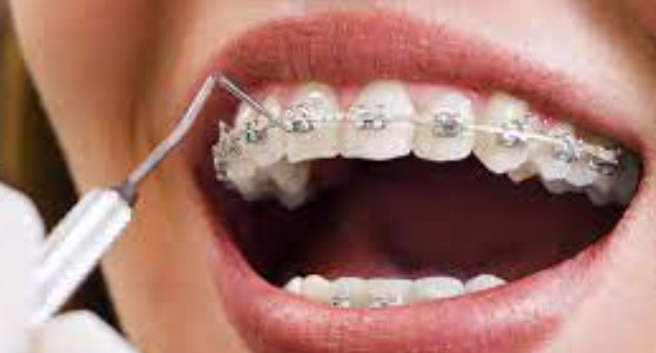There are several commercial ancestry tests that include “Native American” as an ethnicity category. However, direct-to-consumer ancestry testing may be less reliable than you might assume when it comes to detecting Native DNA. There is no unique Native American ancestry test, and each firm bases its testing on different reference populations with distinct genetic markers.
“Native American” is typically a very broad category when it appears on an ancestry DNA test. Native Americans from all over the Americas are frequently represented, with the majority coming from South or Central America. There aren’t many persons with Native American heritage in DNA databases because Native Americans living in the United States may be wary of for-profit genetic testing businesses and reluctant to give their genetic data to researchers who aren’t connected to any particular tribe.
There aren’t enough Americans with Native American ancestry in ancestry databases to establish a reference population, which has the practical consequence of being impossible to do. While some tests may be able to differentiate between Native Americans from North America and populations from South and Central America, they are unable to differentiate between tribes.
Due to a history of adoption and admixture across tribes, it is likely that if specific tribes had their DNA sequenced or genotyped, they would be too genetically similar to discriminate between one another. It is also possible that the DNA of enrolled tribal members would not be solely “Native,” since they would also likely have European, African, and Asian ancestry as a result of colonialism, intermarriage, and intermingling. For instance, it was discovered through DNA testing that members of the Seaconke Wampanoag tribe in Massachusetts also had European and African heritage.
Various ancestry test types
Genotyping or SNP testing:
Today, all of the main ancestry testing businesses use genotyping or SNP testing to analyze our DNA. Single Nucleotide Polymorphisms, or “SNPs” (pronounced “snips”), are modifications to a single letter in the jumbled ACGT alphabet of our genes.
When we send off saliva samples to 23andMe or AncestryDNA, our DNA is compared to a reference genome to find particular SNPs, and variations in our genetic code that affect traits like height, eye color, skin tone, and hair texture. Most of these genetic variations still have unknown functions. However, some variations can be used as ancestry markers because they are more typical of some global populations than others.
These ancestry companies analyze SNPs or genetic variants in our autosomal DNA. Specifically, 22 of our 23 pairs of chromosomes are unrelated to the genetic determinants of sex. Our recent ancestry can be determined by the variances in our autosomal DNA up to roughly 10 generations in the past. Approximately 50% of our autosomal DNA comes from each of our parents. Except for identical twins, the random portion of our parents’ DNA that we inherit prevents us from being exact replicas of our siblings.
As a result, siblings may inherit ancestry markers that differ from one another. For example, your sister’s ancestry DNA test may reveal that she is 15% Native American while you only display 7%.
Maternal and parental haplogroups:
Haplogroup analysis is another type of DNA ancestry testing. This examines your father and mother’s ancestry (if you are genetically male).
You’re mitochondrial DNA (mtDNA), which we all inherit from our mothers, is examined via maternal haplogroup testing. Men and women can both do maternal ancestry tests because everyone has mtDNA. Because mtDNA doesn’t mutate frequently, we can utilize the mutations we have to track the movements of our maternal ancestors both inside and outside of Africa.
A map depicting these migrations is frequently produced by haplogroup testing, such as the one offered as part of the 23andMe ancestry service.
Since ancestry testing examines the DNA found in the Y chromosome, which males inherit from their fathers, they are only available to genetically male people. (However, ladies can ask their male relatives about their paternal origin.) Because Y-DNA mutations are less frequent than those in mtDNA, they can be used to follow the travels of your paternal ancestors.
Naturally, mtDNA and Y-DNA can only trace two lines of your family tree and omit all of your other heritage because they are only shared by your direct maternal ancestors (mother’s mother, etc.) and direct paternal ancestors (father’s father, etc.). When taken without an autosomal SNP test, your haplogroups won’t provide much information about your recent heritage.
Because of this, even if you have Native American ancestry, your haplogroup may not always show it. For instance, even if your grandmother is Cherokee, you won’t share a maternal or paternal haplogroup with her if she is your father’s mother.
STR testing and DNA fingerprinting
Very few businesses conduct ancestry tests using STR markers. When they do, businesses frequently advertise their tests as “DNA Fingerprint” testing. Short Tandem Repeats, or “STRs,” are regions of your DNA in DNA test labs through DNA test kits where DNA repeats itself in a certain and recognizable sequence.
The two applications of STR testing that are most frequently utilized are forensic DNA profiling and family relationship tests (like paternity tests) in DNA testing labs through DNA test kits. Although the genetic data found in the genes themselves are not examined, these markers can still be used to identify people and their relationships with one another.
It has been determined that some STRs originate from worldwide populations. However, very little information is revealed by STR ancestry tests. These tests typically don’t focus on particular nations or regions, only how much of an African, Asian, European, etc., you are. Come to Choice DNA now.







